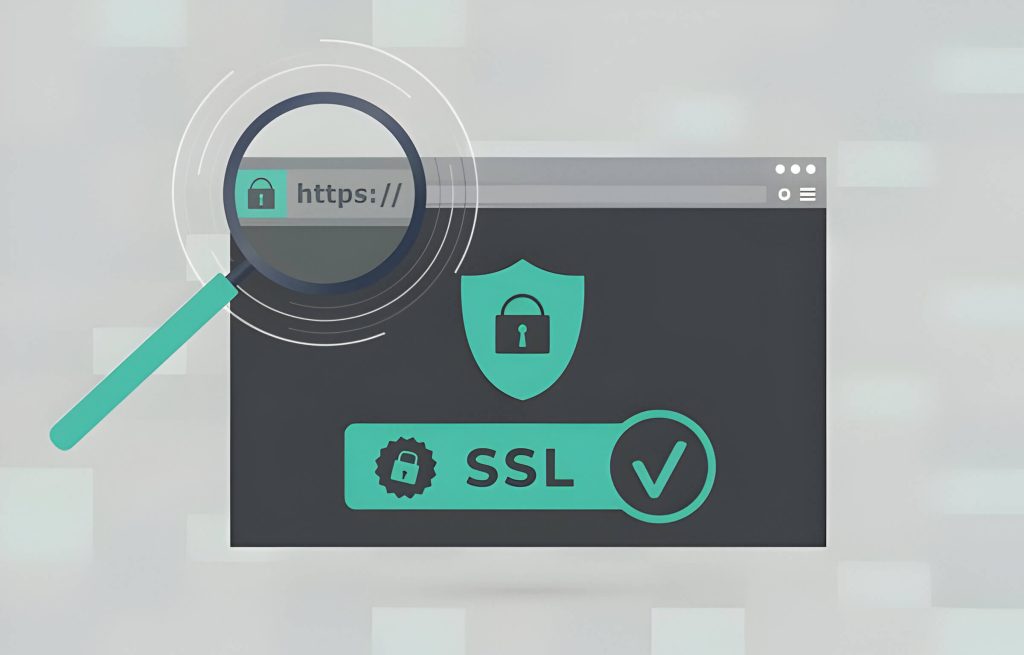Website Security (Essential Steps to Protect Your Online Presence)

Website security is crucial in today’s digital world to protect online assets and maintain a strong presence. As cyber threats evolve, implementing robust security measures is essential for businesses and individuals. This article examines key strategies and best practices for safeguarding websites, including authentication protocols and regular security assessments, to create a secure and trustworthy online environment.
The Importance of Website Security
Website security is a critical aspect of maintaining a strong online presence in today’s digital landscape. As cyber threats continue to evolve, understanding the basics of cybersecurity has become essential for businesses and individuals alike. Protecting your digital assets from potential vulnerabilities is not just about safeguarding your data; it’s about preserving your reputation and maintaining the trust of your users.
One of the primary concerns in website security is the protection of sensitive information. This includes customer data, financial records, and proprietary business information. By implementing robust security measures, you can significantly reduce the risk of data breaches and unauthorized access to your website’s backend.
Common online threats include malware infections, SQL injections, and distributed denial-of-service (DDoS) attacks. These can compromise your website’s functionality, expose user data, and even lead to financial losses. Regular security audits and updates are crucial in identifying and addressing potential vulnerabilities before they can be exploited by malicious actors.
Investing in website security is not just a technical necessity; it’s a business imperative. A secure website instills confidence in your visitors, encouraging them to engage with your content and services. Moreover, search engines like Google factor in website security when determining search rankings, making it an important element of your overall digital strategy.
By prioritizing website security and staying informed about the latest cybersecurity practices, you can create a safer online environment for your business and your users, ensuring the long-term success of your digital presence.
Implementing Strong Authentication Measures
Website security is paramount in today’s digital landscape, and strong authentication measures are the first line of defense against unauthorized access. Two-factor authentication (2FA) has become a crucial component of secure login processes, adding an extra layer of protection beyond traditional passwords. By requiring users to provide two different authentication factors, such as a password and a temporary code sent to their mobile device, 2FA significantly reduces the risk of account breaches.
Robust password policies are equally important in maintaining user access control. Websites should enforce the use of complex passwords, including a mix of uppercase and lowercase letters, numbers, and special characters. Additionally, implementing minimum password length requirements and regular password change prompts can further enhance security.
To assist users in managing their credentials securely, website administrators should consider recommending or integrating password managers. These tools help users generate and store strong, unique passwords for each of their accounts, reducing the likelihood of password reuse across multiple platforms.
By combining these authentication measures, websites can create a more secure environment for their users, protecting sensitive information and maintaining trust in their digital services.
Keeping Your Website Software Up-to-Date
Maintaining up-to-date website software is crucial for ensuring optimal security and performance. Regular updates to your Content Management System (CMS), plugins, and themes are essential in protecting your site against potential vulnerabilities and cyber threats.
Software developers frequently release security patches to address newly discovered weaknesses. By promptly applying these updates, you significantly reduce the risk of your website falling victim to malicious attacks. Additionally, newer versions often come with improved features and bug fixes, enhancing your site’s overall functionality.
Effective plugin management is another key aspect of website maintenance. Regularly review and update your plugins, removing any that are no longer necessary or supported. This practice not only bolsters security but also helps maintain your site’s speed and efficiency.
Implementing version control for your website’s codebase can be invaluable. It allows you to track changes, revert to previous versions if needed, and collaborate more effectively with team members or developers.
Remember, CMS maintenance is an ongoing process. Set up a regular schedule for checking and applying updates to ensure your website remains secure, functional, and up-to-date with the latest technological advancements.
Securing Your Website with SSL/TLS Certificates

Implementing SSL/TLS certificates is a crucial step in securing your website and protecting user data. These digital certificates enable HTTPS, which encrypts data transmitted between a user’s browser and your web server. This encryption prevents unauthorized access and data interception, ensuring sensitive information remains confidential.
SSL certificates also serve as trust signals for visitors, displaying visual cues like padlock icons in browsers. This reassures users that their connection is secure, potentially increasing engagement and conversions. Search engines, particularly Google, favor HTTPS-enabled sites, potentially boosting your search rankings.
When selecting an SSL certificate, consider options like domain validation (DV), organization validation (OV), or extended validation (EV) certificates, depending on your website’s needs and level of security required. Many hosting providers offer free SSL certificates, while paid options provide additional features and stronger validation.
Implementing HTTPS across your entire site, including subdomains and resources, is essential for comprehensive security. Regular certificate renewal and proper configuration are vital to maintaining a secure connection and avoiding potential security vulnerabilities.
Implementing Web Application Firewalls (WAF)
Web Application Firewalls (WAFs) are a crucial component of modern website security strategies. These specialized firewalls provide an additional layer of protection by filtering and monitoring HTTP traffic between web applications and the Internet. WAFs excel at malware detection, effectively identifying and blocking potential threats before they can compromise your website’s integrity.
One of the key benefits of implementing a WAF is its ability to prevent Distributed Denial of Service (DDoS) attacks. By analyzing incoming traffic patterns and applying sophisticated security rules, WAFs can distinguish between legitimate users and malicious bots, ensuring your website remains accessible during attack attempts.
Traffic filtering is another essential feature of WAFs. They scrutinize incoming requests, blocking those that match known attack signatures or exhibit suspicious behavior. This proactive approach significantly reduces the risk of SQL injections, cross-site scripting (XSS), and other common web vulnerabilities.
WAFs also offer customizable security rules, allowing administrators to tailor protection based on their specific needs. These rules can be fine-tuned to address unique threats or comply with industry-specific regulations, providing a flexible and adaptive security solution.
By implementing a Web Application Firewall, website owners can dramatically enhance their overall security posture, safeguarding sensitive data and maintaining user trust in an increasingly hostile online environment.
Regular Website Backups and Recovery Plans
Regular website backups and robust recovery plans are essential components of a comprehensive website security strategy. Implementing effective data backup strategies ensures that your valuable content, customer information, and site configurations are protected against potential disasters or cyber threats.
Cloud storage solutions offer a secure and scalable option for storing website backups off-site, reducing the risk of data loss due to on-premises hardware failures or physical disasters. Many cloud providers offer automated backup services, simplifying the process of maintaining up-to-date copies of your website.
Backup automation is crucial for ensuring consistent and timely backups without manual intervention. By scheduling regular backups, you can minimize data loss in the event of an incident and maintain business continuity. It’s recommended to perform daily incremental backups and weekly full backups for optimal protection.
Equally important are well-defined restoration procedures. These should be documented, tested regularly, and accessible to key personnel. A clear recovery plan outlines the steps needed to quickly restore your website from backups, minimizing downtime and potential revenue loss.
Remember, the effectiveness of your backup strategy is only as good as your ability to restore from it. Regularly test your backups by performing mock recoveries to ensure data integrity and familiarize your team with the restoration process.
Monitoring Website Traffic and Security Logs

Monitoring website traffic and security logs is crucial for maintaining a robust online presence and protecting against potential threats. By regularly analyzing traffic patterns and security events, website owners can gain valuable insights into user behavior, identify potential vulnerabilities, and detect suspicious activities.
Effective log management involves collecting, storing, and analyzing various types of logs, including server logs, application logs, and network logs. These logs provide a wealth of information about website visitors, their interactions, and any attempts to compromise the system.
Traffic analysis helps in understanding user engagement, popular content, and peak usage times. This information can be used to optimize website performance, improve user experience, and make data-driven decisions for content strategy.
Security audits, conducted using log data, play a vital role in identifying potential weaknesses in the website’s infrastructure. Regular audits help ensure compliance with security standards and industry regulations.
Intrusion detection systems leverage log data to identify and alert administrators about potential security breaches. By establishing baseline behavior patterns, these systems can quickly flag anomalies that may indicate malicious activities.
Anomaly identification goes beyond simple pattern matching. Advanced log analysis techniques, often powered by machine learning algorithms, can detect subtle deviations from normal behavior, potentially uncovering sophisticated attack attempts or emerging threats.
By implementing a comprehensive log monitoring strategy, website owners can enhance their security posture, improve operational efficiency, and maintain a safe and reliable online environment for their users.
Educating Your Team on Security Best Practices
Educating your team on security best practices is crucial for maintaining a robust defense against cyber threats. Start by implementing comprehensive security awareness training programs that cover essential topics such as website security, phishing prevention, and social engineering tactics. Emphasize the importance of safe browsing habits, including verifying website authenticity and avoiding suspicious downloads. Teach employees to recognize common phishing attempts and social engineering techniques, equipping them with the skills to identify and report potential threats.
Encourage the use of strong, unique passwords and multi-factor authentication across all accounts. Establish clear guidelines for handling sensitive information and accessing company resources remotely. Regular training sessions and simulated phishing exercises can help reinforce these concepts and keep security awareness at the forefront of employees’ minds.
Create a culture of security by promoting open communication about potential threats and establishing a clear incident reporting process. Encourage team members to report any suspicious activities or security concerns promptly. By fostering a security-conscious environment and providing ongoing education, you can significantly reduce the risk of successful cyber attacks and protect your organization’s valuable assets.
Conducting Regular Security Assessments and Penetration Testing
Regular security assessments and penetration testing are crucial components of a robust website security strategy. Vulnerability scanning tools can identify potential weaknesses in your website’s infrastructure, while penetration testing simulates real-world attacks to expose hidden vulnerabilities. These processes, often conducted by ethical hackers, provide invaluable insights into your site’s security posture.
Security audits should be performed periodically to ensure compliance with industry standards and best practices. These comprehensive evaluations examine all aspects of your website’s security, from server configurations to user access controls. Risk assessments, conducted as part of these audits, help prioritize security efforts by identifying critical assets and potential threats.
By implementing a regular schedule of security assessments and penetration testing, website owners can stay ahead of emerging threats, patch vulnerabilities promptly, and maintain a strong defense against cyber attacks. This proactive approach not only protects sensitive data but also builds trust with users and stakeholders, demonstrating a commitment to security in an increasingly digital world.
Maintaining Ongoing Website Security in a Dynamic Digital Landscape
As we conclude our exploration of website security, it’s crucial to emphasize that protecting your online presence is an ongoing process. The digital landscape is constantly evolving, with new threats emerging and existing ones becoming more sophisticated. To stay ahead of potential security risks, website owners and administrators must remain vigilant and proactive.
Regular security audits, software updates, and employee training are essential components of a robust security strategy. By implementing the best practices discussed throughout this article, you can significantly reduce the likelihood of successful attacks and minimize potential damage.
Remember that no security measure is foolproof, and a layered approach is always the most effective. Combining technical solutions with human awareness and preparedness creates a formidable defense against cyber threats.
As technology continues to advance, so too will the methods used by malicious actors. Stay informed about the latest security trends, emerging threats, and industry best practices. Engage with security professionals, participate in relevant forums, and consider investing in professional security services to ensure your website remains protected.
The security of your website is an investment in your business’s reputation, customer trust, and long-term success. By prioritizing and maintaining robust security measures, you can confidently navigate the dynamic digital landscape and focus on what matters most – growing your online presence and serving your audience.